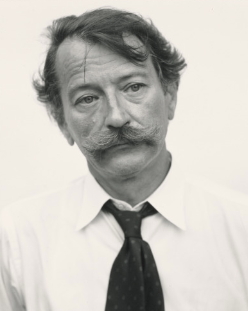History
Jeffrey Fraenkel opened Fraenkel Gallery on 11 September 1979 at 55 Grant Avenue, San Francisco. Frish Brandt joined Fraenkel Gallery in 1985, and became a partner in 1989. [5] [8] She served as President for eight years, and in 2023, she transitioned to President Emerita. Daphne Palmer joined the gallery in 2013 and was appointed President in 2024. [9]
Fraenkel Gallery’s inaugural exhibition featured 19th-century photographs of California by Carleton Watkins. In the gallery’s first decade, it brought new attention to under-recognized photographs by seldom-exhibited 19th-century artists including Watkins, Timothy O’Sullivan, Anna Atkins, and Eadweard Muybridge. Fraenkel Gallery’s second exhibition featured Lee Friedlander, and the gallery soon began showing work by other significant 20th-century artists, including Walker Evans, Robert Frank, Helen Levitt, Diane Arbus, Robert Adams, Garry Winogrand, and Bruce Conner. [10]
Two years after the 1989 Loma Prieta earthquake, Fraenkel Gallery moved to a larger space at 49 Geary Street, one block from their first location. [5] [11] [12] The gallery expanded the range of artworks and media featured in exhibitions and books, and presented solo shows by artists including Nan Goldin, Hiroshi Sugimoto, Sophie Calle, Richard Avedon, Sol LeWitt, Gilbert & George, Jay DeFeo, and Bernd and Hilla Becher, as well as group shows encompassing sculpture, drawing, and mixed media.
In the 2000s, Fraenkel Gallery began to feature more artists working outside of photography, and exhibitions during this decade included Edward Hopper & Company, [13] Nothing and Everything: Painting, Photography, Drawing & Sculpture 1896–2006, and Not Exactly Photographs. [14] The gallery also added Katy Grannan, [15] Peter Hujar, Christian Marclay, and Ralph Eugene Meatyard to its roster, and began participating in international art fairs including Art Basel and Paris Photo. [10]
In the 2010s, Fraenkel Gallery exhibited an increasingly wider swath of multi-disciplinary work, as well as video, sculpture, paintings, film posters, and record albums. The gallery added younger artists to its roster, including Alec Soth, Richard T. Walker, Wardell Milan, Elisheva Biernoff, and Richard Learoyd, as well as those working in a range of media, such as Janet Cardiff & George Bures Miller and Mel Bochner. The satellite space FraenkelLAB, at 1632 Market Street in San Francisco, ran from 2016 through 2017 with a diverse and experimental program. The inaugural exhibition, Home Improvements, [16] was curated by John Waters, and subsequent exhibitions included the work of Richard T. Waker, [17] David Benjamin Sherry, [18] Sophie Calle, Katy Grannan, Alec Soth and others.
Since 2020, the gallery’s roster has grown to include Liz Deschenes, [19] Kota Ezawa, Martine Gutierrez, [20] and Carrie Mae Weems, [21] who have been featured in solo exhibitions along with shows by longtime gallery artists Robert Adams, Bernd & Hilla Becher, [22] Nan Goldin, Richard Misrach, Hiroshi Sugimoto and others. The program has presented exhibitions curated by artists from various disciplines, including Carrie Mae Weems’s selection of photographs by Diane Arbus, Sir Elton John’s take on Peter Hujar, and film director Joel Coen’s view of Lee Friedlander. [23]














